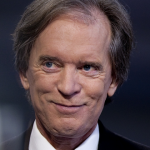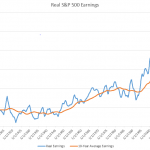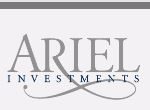Objective and strategy
Ariel Global Fund’s fundamental objective is long-term capital appreciation. The manager pursues an all-cap global portfolio. The fund is, in general, currency hedged so that the returns you see are driven by stock selection rather than currency fluctuation. The manager pursues a “bottom up” discipline which starts by weeding out as much trash as humanly possible before proceeding to a meticulous investment in both the fundamentals of the remaining businesses and their intrinsic value. The fund is diversified and will generally hold 50-150 positions. As of July 2016, there are 84.
Adviser
Ariel Investments LLC of Chicago. Founded in 1983, Ariel manages $10 billion in assets spread between nine separate account strategies and six mutual funds. Ariel provides a great model of a socially-responsible management team: the firm helps run a Chicago public charter school, is deeply involved in the community, has an intriguing and diverse Board of Trustees, is employee-owned, and its managers are heavily invested in their own funds. One gets a clear sense that these folks aren’t going to play fast and loose either with your money or with the rules.
Manager
Rupal Bhansali. Ms. Bhansali joined Ariel in 2011 and has served as portfolio manager for the International and Global Funds since their inception in 2011. She and her team are based in New York City which substantially eases the burden of meeting representatives of the non-U.S. firms in which they might invest. She has more than 20 years of industry experience, most recently spending 10 years at MacKay Shields as Head of International Equities, managing MainStay International (MSEAX). Before that, she was a portfolio manager and co-head of international equities at Oppenheimer Capital.
Strategy capacity and closure
Vast. The combined global and international strategies hold about $3.5 billion now but could accommodate $50 billion.
Management’s stake in the fund
A lot more than is obvious at first glance. Ms. Bhansali’s reported investment in the fund is between $50,000 – $100,000 as of September 30, 2015. She has two layers of additional investment. First, Ariel is owned by its employees and directors so when she joined the firm, she devoted a fair amount of her wealth to investing in it. Second, her portfolios were originally marketed as separately-managed accounts; she made a substantial investment in such an account to visibly align herself with her investors. As a result, the reported investment in the fund is a fraction of her total financial commitment.
I am a bit perplexed that Ariel president John Rogers hasn’t invested in the fund, though he does have a noticeable investment in its sibling, Ariel International (AINTX). Six of Ariel’s seven independent trustees have chosen to invest in the fund, as have four of her six fellow managers.
Opening date
December 30, 2011.
Minimum investment
$1,000 for Investor shares, $1 million for Institutional (AGLYX) ones.
Expense ratio
1.25%, after waivers, for Investor shares on assets of $88 million, as of July 29, 2016. The Institutional shares charge 1.0%.
Comments
I have twice had the opportunity to speak with Ms. Bhansali and have come away impressed from each encounter. She’s had a long career in international and global investing. She’s very smart and articulate; she really gives the impression of thinking about questions rather than rattling off talking points. She’s made a series of principled and thoughtful career moves, and she’s served her investors well. I hope you have the opportunity to engage with her as well.
Three things worth knowing:
- She and her team think of themselves as business analysts, not financial analysts. There are a lot of businesses out there which are poorly run, vulnerable to predation or in a dying industry. She wants no part of any of them. “When we look at these fundamental business risks, we eliminate 60% of all firms. Those are stocks that we would not own, ever, regardless of price.” To be clear: they are sensitive to price and valuation, but only if the underlying business is sound. Of the sound businesses, about 50% are fully valued. They focus their 360-degree analysis on the remaining 20%.
- She and her team are very risk conscious. “We start with the question, ‘what can go wrong? How bad could it get?’ and if we don’t like the answer, we walk away. No amount of theoretical upside is worth some of these risks.”
- She and her team build the portfolio stock-by-stock. They’re not benchmarking themselves against an index or peer group; the culture at Ariel favors independent thinking even when it means being out of step. Similarly, they don’t make thematic bets. They allow ideas to compete for space in the portfolio. The more misunderstood a firm is, the more it’s likely mispriced. An example she cites frequently is the choice between Microsoft (which she does own) and Apple (which she doesn’t). Everyone knows that these are two tech giants and everyone knows that tech companies post flashy growth numbers, everyone knows that Microsoft’s best days are behind it. In consequence, everyone bought Apple. As it turns out, “everyone” was wrong. Over the past five years, an investment in Microsoft – a steady cash machine with predictable, recurrent cash flows – was far more profitable than an investment in Apple. “Everyone is ‘contrarian’ but it’s not enough to be contrarian. You must be contrary and correct. Very few are.” The most mispriced firms earn the largest spots in the portfolio. As of August 2016, Microsoft is the fund’s largest holding.
We should note, finally, that the fund’s performance is better than it looks. Both of her funds lagged their peers during their first two quarters of operation (Q1 and Q2, 2012). They have substantially outperformed since then. Ms. Bhansali identifies four factors behind the lag:
- The fund launched one day too late. A fund’s first NAV is published at the end of its first day. The markets rose by 200 bps that day but the fund recorded zero change.
- The fund was still deploying cash during a very buoyant quarter. Q1 saw the average fully-invested global fund rise by 12%.
- The fund was contrarian on the emerging markets, which everybody “had to” own. The EMs rose 14% in that quarter. (Now that everyone hates the emerging markets, the fund is overweight in them.)
- Five stocks in the portfolio had unrelated profit warnings in Q2, each got hammered. After reassessment, they liquidated two of the five positions (both of which continued falling) and added to the other three, all of which have been strong performers since then. Having so many stocks pop up with warnings in such a short period was, she reports, “an aberration.”
Bottom Line
Ariel International and Global follow the same discipline. Purists might prefer to look more closely at the larger, five-star International (AINTX) fund. Both because it’s smaller and it affords its manager greater flexibility, we chose to profile Global. In either case, patient, risk-sensitive investors interested in expanding (or upgrading) their international exposure should add the funds to their due-diligence list.











